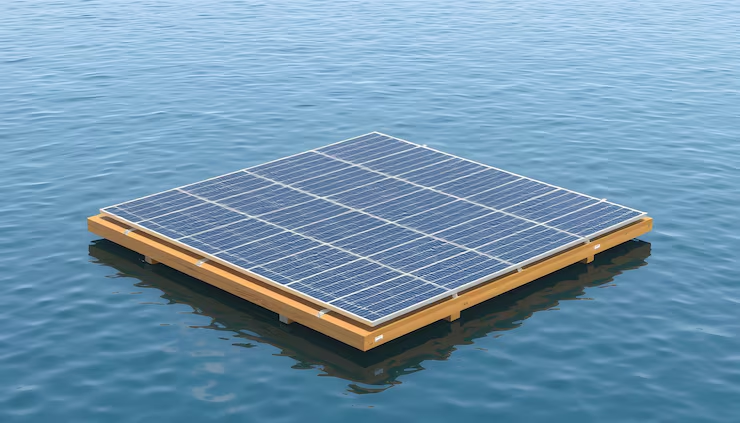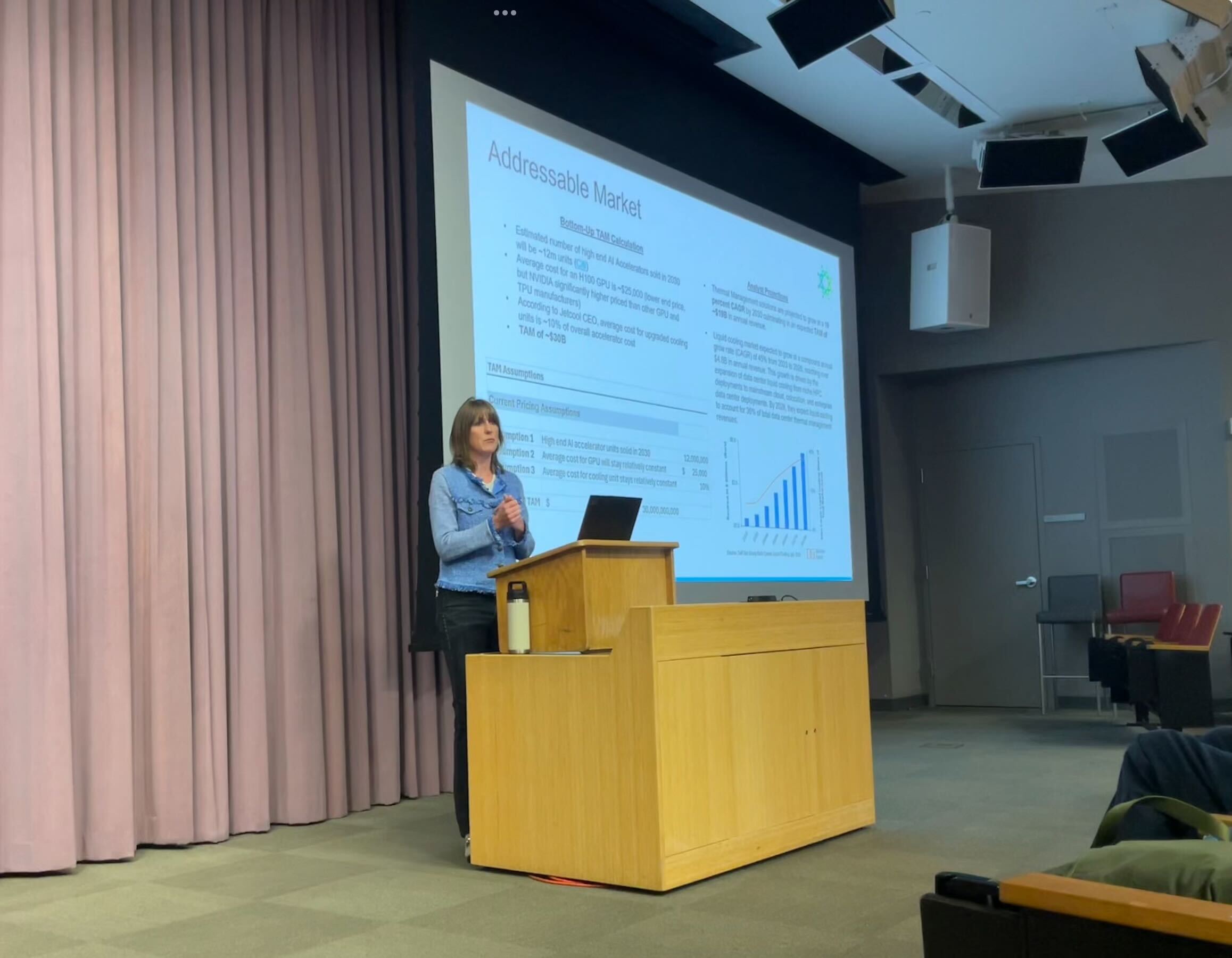Floating power: How scientists are turning raindrops into renewable energy – The Brighter Side of News

Report on a Novel Floating Droplet Electricity Generator and its Contribution to Sustainable Development Goals
Introduction: Advancing SDG 7 through Innovative Clean Energy
Researchers at the Nanjing University of Aeronautics and Astronautics have developed a water-integrated floating droplet electricity generator (W-DEG), a novel technology that captures kinetic energy from raindrops. This innovation, detailed in the National Science Review, represents a significant step towards achieving Sustainable Development Goal 7 (Affordable and Clean Energy) by introducing a scalable, cost-effective, and environmentally integrated renewable energy source. The W-DEG operates without land-based supports, utilizing the water body it floats on as a key component, thereby aligning with principles of sustainable infrastructure and innovation (SDG 9).
Technological Framework and Comparison
The W-DEG improves upon conventional Droplet Electricity Generators (DEGs), which are limited by their reliance on heavy, costly, and land-based metal structures.
Key Distinctions: W-DEG vs. Conventional DEG
- Conventional DEG: Utilizes a solid metal base, making it heavy, expensive, and impractical for deployment on water surfaces such as lakes, rivers, and oceans.
- W-DEG Innovation: Employs the water body itself as the bottom electrode and floating base. This “nature-integrated” design drastically reduces material requirements, weight, and cost, directly supporting sustainable consumption and production patterns (SDG 12).
Performance, Viability, and Alignment with SDGs
The W-DEG demonstrates significant improvements in efficiency, cost, and environmental resilience, making it a viable technology for advancing global sustainability targets.
Economic and Physical Advantages
- Cost Reduction: The fabrication cost is approximately 106 yuan ($15) per square meter, nearly half the 210 yuan ($29) cost of a traditional DEG. This affordability enhances its potential contribution to SDG 7.
- Weight Reduction: Weighing only 0.5 kilograms per square meter, the W-DEG is 87% lighter than a conventional generator (over 4 kg), facilitating easier transport and deployment over large water surfaces.
- Energy Output: Despite its low weight and cost, a single droplet impact can generate a potent voltage of up to 250 volts.
Environmental Resilience and Contribution to SDG 14
The device is designed for long-term operation in aquatic environments, a critical factor for protecting life below water (SDG 14).
- Material Durability: The core component, a fluorinated ethylene propylene (FEP) film, is chemically inert and resistant to corrosion, temperature fluctuations, and biofouling.
- Operational Integrity: Field tests confirmed sustained functionality even after a week in highly saline water. The system’s performance was unaffected by various water types, including tap, lake, and lightly salted water.
- Self-Cleaning Mechanism: Integrated self-draining holes use gravity and surface tension to mitigate the buildup of contaminants, ensuring consistent performance with minimal maintenance.
Scalability and Practical Applications for Global Goals
The research demonstrates the W-DEG’s potential to be scaled from a single unit to large arrays, offering practical solutions for various global challenges.
Demonstrated Scalability
In a prototype test, an array of 10 W-DEG units covering 0.3 square meters was assembled. Under simulated rainfall, the array charged a capacitor to three volts within minutes, sufficient power for small electronics. A single generator unit proved capable of powering 50 LEDs, showcasing its potential for scalable energy generation.
Potential Applications Supporting SDGs
- SDG 6 (Clean Water and Sanitation): Powering remote wireless sensors for monitoring water quality and pollution in lakes and reservoirs.
- SDG 11 (Sustainable Cities and Communities): Providing a supplementary power source for rural microgrids in developing nations, reducing reliance on fossil fuels or complex battery systems.
- SDG 13 (Climate Action): Offering a land-free renewable energy source that can complement solar and wind power, particularly during stormy or cloudy conditions when other renewables may be less effective.
Conclusion: A Nature-Integrated Strategy for Sustainable Energy
The W-DEG represents a paradigm shift in renewable energy by integrating natural elements into its core design. By using water as both a structural and electrical component, this technology provides a lightweight, cost-effective, and scalable solution for clean energy generation. Its development offers a promising pathway toward achieving multiple Sustainable Development Goals, particularly in the pursuit of affordable clean energy, resilient infrastructure, and climate action on a global scale.
SDGs Addressed in the Article
SDG 7: Affordable and Clean Energy
- The entire article focuses on the development of a new technology for generating clean energy. It is described as a “floating electricity generator that captures energy from falling raindrops” and part of a “global race to develop sustainable energy solutions.” The technology is presented as a new type of “renewable energy” that is also more affordable than previous versions.
SDG 9: Industry, Innovation, and Infrastructure
- The article highlights a significant scientific innovation from researchers at the Nanjing University of Aeronautics and Astronautics. It details the research and development process of the “water-integrated floating droplet electricity generator (W-DEG),” emphasizing its improved design, cost-effectiveness, and scalability (“from laboratory model to scalable arrays”). This represents an upgrade in technology and a move towards more sustainable industrial processes.
SDG 6: Clean Water and Sanitation
- The article connects the energy-generating technology to water management by proposing a practical application: “to power remote monitoring systems, as one example, of sensors that detect water quality or water pollution.” This directly supports efforts to monitor and maintain water quality in various bodies of water.
SDG 14: Life Below Water
- The W-DEG is specifically designed to operate on water surfaces, including lakes, rivers, and oceans. The article notes its resilience to saline water and biofouling, making it suitable for marine environments. By providing power for water pollution sensors in these environments, it contributes to the sustainable use and protection of marine and freshwater ecosystems.
Specific SDG Targets Identified
Target 7.2: By 2030, increase substantially the share of renewable energy in the global energy mix.
- The W-DEG technology represents a “new type of renewable energy” that harnesses kinetic energy from rainfall. The article states it could help in “filling gaps in solar and wind energy,” thereby contributing to an increased share of renewables.
Target 7.b: By 2030, expand infrastructure and upgrade technology for supplying modern and sustainable energy services for all in developing countries…
- The article explicitly mentions that “Developing countries could utilize this technology to affordably add another landless renewable energy source.” The low cost and weight of the W-DEG make it a viable option for expanding sustainable energy infrastructure in these regions.
Target 9.4: By 2030, upgrade infrastructure and retrofit industries to make them sustainable, with increased resource-use efficiency and greater adoption of clean and environmentally sound technologies…
- The W-DEG is presented as a clean technology that is significantly more resource-efficient than its predecessors. The article notes it replaces “metal and rigid materials with water,” resulting in an “87 percent reduction in weight” and a cost that is “just a little less than half as much to fabricate.”
Target 6.3: By 2030, improve water quality by reducing pollution…
- The technology’s ability to “power a wireless water quality sensor” is a direct contribution to this target. Such sensors are essential for monitoring pollution levels and implementing measures to improve water quality.
Indicators for Measuring Progress
Energy Generation Capacity
- The article implies that the amount of electricity produced is a key performance indicator. It provides specific metrics such as the generator producing a “potent voltage of 250 volts every time a droplet makes contact” and a prototype array being able to charge a capacitor to “three volts in minutes,” enough to power small electronics.
Cost and Resource Efficiency
- The article provides clear, quantifiable indicators of improved efficiency compared to traditional technology. These include:
- Cost per square meter: Reduced from 210 yuan ($29) for a traditional generator to 106 yuan ($15) for the W-DEG.
- Weight per square meter: Reduced from over four kilograms to only 0.5 kilograms, an 87% reduction.
Scalability and Deployment
- Progress can be measured by the ability to scale the technology. The article mentions that researchers “connected multiple devices into floating arrays” and created a 0.3 m² prototype, demonstrating its scalability. The number and size of deployed arrays would be a direct indicator of progress.
Application in Environmental Monitoring
- An indicator for progress towards water quality targets would be the number of remote monitoring systems or “sensors that detect water quality or water pollution” that are successfully powered by W-DEG technology in real-world applications.
Summary of SDGs, Targets, and Indicators
| SDGs | Targets | Indicators |
|---|---|---|
| SDG 7: Affordable and Clean Energy | 7.2: Increase the share of renewable energy. 7.b: Expand sustainable energy services in developing countries. |
– Electrical output per device/array (e.g., 250 volts per droplet). – Cost per square meter ($15). |
| SDG 9: Industry, Innovation, and Infrastructure | 9.4: Upgrade infrastructure with clean and resource-efficient technologies. | – Reduction in material weight (87% less than traditional DEGs). – Reduction in fabrication cost (nearly 50% less). |
| SDG 6: Clean Water and Sanitation | 6.3: Improve water quality by reducing pollution. | – Number of water quality sensors powered by the technology. |
| SDG 14: Life Below Water | 14.1: Reduce marine pollution. | – Number of pollution monitoring systems deployed on marine or freshwater bodies. |
Source: thebrighterside.news
What is Your Reaction?
 Like
0
Like
0
 Dislike
0
Dislike
0
 Love
0
Love
0
 Funny
0
Funny
0
 Angry
0
Angry
0
 Sad
0
Sad
0
 Wow
0
Wow
0




















































.jpg.webp?itok=0ZsAnae9#)



























